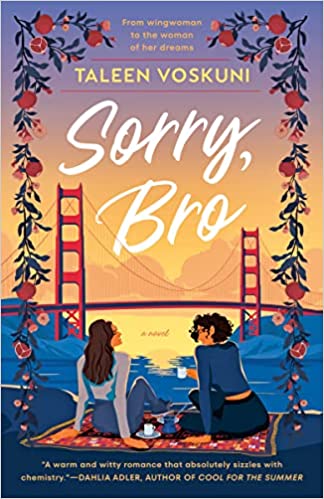Buy this from Bookshop.org to support local bookstores and the Lesbrary! After ending her long-term relationship with her non-Armenian boyfriend, Nar decides to agree to let her mother help her find a new boyfriend among the eligible Armenian bachelors of San Francisco. She plans to spend the next month at local Explore Armenia events, meetingRead More
You Need to Read Last Night at the Telegraph Club by Malinda Lo
Buy this from Bookshop.org to support local bookstores and the Lesbrary! I’m embarrassed to admit I only just read this for the first time. I’ve read every other Malinda Lo book. I’ve had a copy since it first came out—in fact, I’ve owned two copies, because I also spent $100 on a signed hardcover (itRead More
Messy Roots: a Graphic Memoir of a Wuhanese American by Laura Gao
Buy this from Bookshop.org to support local bookstores and the Lesbrary! Messy Roots is Laura Gao’s memoir of her childhood and coming of age, first in Wuhan, China, then an early move to Texas, and finally through her choices of college in Pennsylvania and a job in the Bay area. As a Chinese American immigrant,Read More
Censorship, Expression, and Signaling in Malinda Lo’s Last Night at the Telegraph Club
Buy this from Bookshop.org to support local bookstores and the Lesbrary! Malinda Lo’s novel Last Night at the Telegraph Club (2021) has won multiple awards and has been reviewed multiple times at the Lesbrary already, so let’s start this review somewhere different: Last Night at the Telegraph Club has been banned and/or challenged at least 34 times in 14 states. HavingRead More
Susannah reviews Sorry, Bro by Taleen Voskuni
Amazon Affiliate Link | Bookshop.org Affiliate Link Taleen Voskuni’s promising sapphic debut packs more than your average meet-cute romance. Sorry, Bro follows an Armenian American woman’s quest to balance familial duty, identity, career aspirations, and, of course, love. Nareh, a TV journalist in the San Francisco Bay Area, presents a polished persona on Instagram, butRead More
Larkie reviews Passing Strange by Ellen Klages
Amazon Affiliate Link | Bookshop.org Affiliate Link Passing Strange is a novella that feels like it has it all: a bit of mystery, a lot of history, and just a hint of magic. A queer love story set mostly in 1940 San Francisco, the book opens with Helen Young, and elderly woman who has just aRead More
Nat reviews Chef’s Kiss by Stephanie Shea
Late last year I started really getting into reading sapphic romance after discovering that a guaranteed happy ending is nothing short of a potent drug. A shot of serotonin right into the veins! As I ventured down the queer romance rabbit hole, I realized that some books are certainly more of a balm than others,Read More
Vic reviews Last Night at the Telegraph Club by Malinda Lo
Amazon Affiliate Link | Bookshop.org Affiliate Link Growing up, I devoured books quickly and easily, but by high school, I started to lose interest in the books I found in bookstores or the library, jumping from book to book without finishing a single one. The problem, I determined, was that I was bored with readingRead More
Rachel reviews Last Night at the Telegraph Club by Malinda Lo
Amazon Affiliate Link | Bookshop.org Affiliate Link I read Malinda Lo’s newest book, Last Night at the Telegraph Club (2021) about a month ago, and I’m still thinking about it. If you’re looking for a slice of mid-twentieth-century lesbian culture with some wonderful Chinese American representation and rich social history, Last Night at the Telegraph Club is forRead More
Carolina reviews Last Night at the Telegraph Club by Malinda Lo
It seems apt to begin 2021, a time of reflection and introspection for many, with a YA novel that feels fresh and timeless at the same time. Malinda Lo’s new novel, Last Night at the Telegraph Club echoes with the same beats as my favorite “baby gay” first lesbian novels (e.g. Annie on My MindRead More

